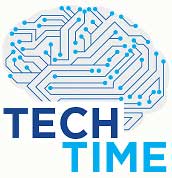SAMHSA Webinar Provides Guidance On Mobile Counseling Apps
Abstract
Though the sheer number of mental health–related apps may seem daunting, making use of resources from organizations such as APA and doing some test driving can help clinicians find suitable options for their patients.
Depending on how broadly one defines “mental health,” there may be upward of 20,000 mobile apps related to mental health and well-being available.

“Any disorder for which we have an effective behavioral treatment, there is an app available related to that treatment,” said Stephen Schueller, Ph.D., in a webinar hosted by the Substance Abuse and Mental Health Services Administration (SAMHSA) in June.
The webinar addressed two main questions: Do counseling-based apps work? And, if they do, how can providers and patients use them optimally?
Schueller, an assistant professor at Northwestern University’s Center for Behavioral Intervention Technologies, pointed out that there have been over 100 randomized, controlled trials assessing mobile apps, and generally they show that apps can be effective at improving symptoms of mental illness. However, apps that are fully automated and self-guided by a user tend to be less helpful than those that include some interaction with another person, he said.
That latter category includes two subcategories: there are guided apps in which the app is the primary counseling tool but professionals are available to provide guidance or feedback, and there are adjunctive apps in which a professional provides face-to-face counseling while the app provides additional support.
Mobile counseling apps tend to be modular and broken down into individual lessons, noted session co-presenter Patricia Areán, Ph.D., a professor of psychiatry and behavioral sciences at the University of Washington. This makes adding content easier and encourages repeat visits, as users have a sense of progress. Many apps include audio and video components, as well as interactive tools, such as symptom trackers or activity schedulers, to reinforce the didactic lessons.
Identifying a good app from among this similarly looking crowd can be challenging, as most counseling apps do not need clearance from the Food and Drug Administration, Schueller said. But, there are still ways psychiatrists and other professionals can become knowledgeable about apps for a certain disorder.
“First, seek out expert opinions,” he said, noting that most mental health organizations have technology interest groups, and these groups may have resources available. As an example, Schueller lauded APA for its work in developing the App Evaluation Model. The APA framework provides a hierarchical rating system for apps that assesses four criteria: safety/privacy, evidence of benefit, ease of use, and interoperability.
Schueller also suggested looking at “clearinghouse” websites that organize and review apps on a certain topic. He oversees one such site known as PsyberGuide (psyberguide.org), which offers reviews and ratings of over 100 mental health apps on three measures: credibility (how much direct or indirect evidence is there that the app does what it claims?), user experience (is it engaging and/or easy to use?), and transparency (how clear is the app policy in detailing data storage and collection procedures?). If an app isn’t covered in any clearinghouses, clinicians and patients can always peruse the reviews on app stores, but these are likely not as objective, Schueller said.
Much like buying a new car, reviews need to be supplemented with some test driving, said Areán. Psychiatrists should test out the apps themselves and/or enlist the aid of nonprofessional peers. “And don’t be afraid to contact the app company if you have questions,” she said. “They are usually very happy to do walkthroughs with you.”
One of the first key considerations of your app “test drive” should be its impact on your workflow, Areán advised. “Will an app integrate into your schedule, or will it be a burden to your day or your patient’s day?” she said. “If either answer is potentially ‘yes,’ then the app will not be successfully adopted.” Typical workflow issues that could be problematic include homework assignments or extensive tracking.
Another factor to consider when previewing apps is how easy or difficult it might be to review patient data, Areán continued. Most patient-centered apps do not automatically provide data to clinicians, so they must find other ways to view this information. It may seem like a minor issue, but having two people look at a phone screen together can be problematic.
“You could also ask a patient to hand you their phone, but they might not be comfortable doing that, either,” she said.
Finally, Schueller said to be cognizant of how engaging an app feels. It’s a bit of a conundrum in the field, as studies routinely show that the apps that can be most effective are the least fun, he said. However, it’s also proven that most people will stop using an app within one week, and counseling apps require maintained use. ■
More information on APA’s APA Evaluation Model can be accessed here.



